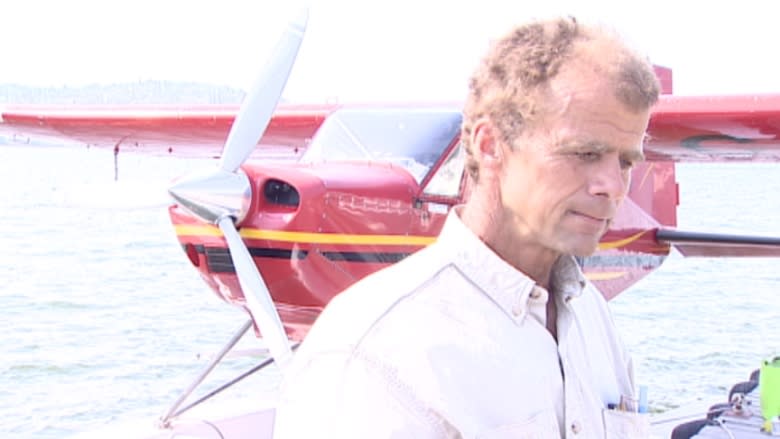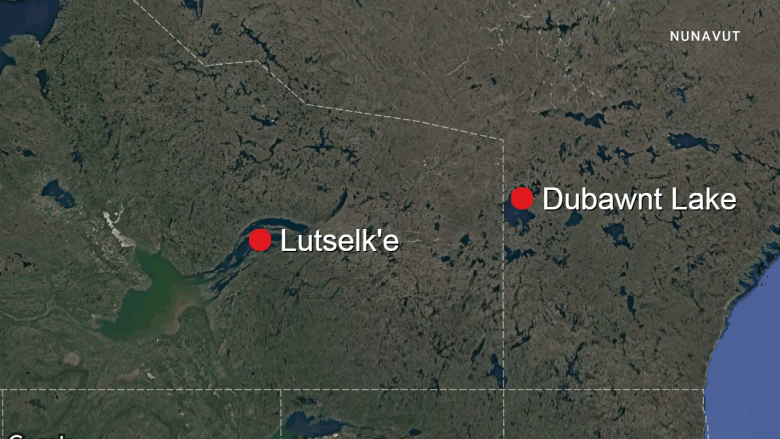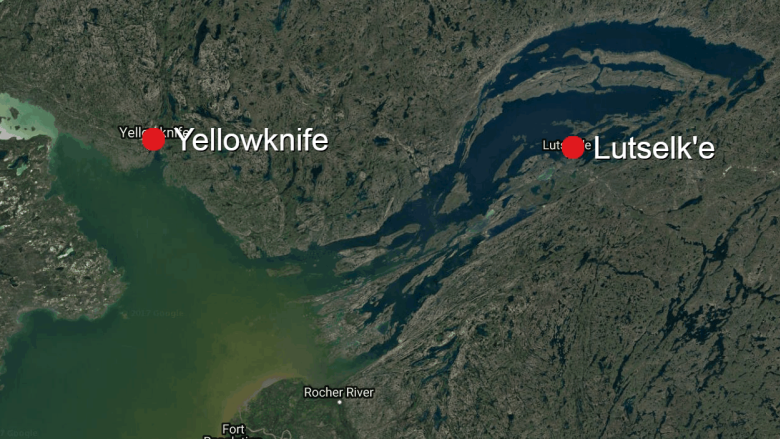Float plane capsizing was like 'slow motion,' says N.W.T. pilot
Dave Olesen was in his float plane preparing to take-off when "a violent gust of wind" got under the right wing of the plane and tipped it over.
Olesen's was one of two float planes that ended up in the water in the Northwest Territories on July 18.
He was flying a research technician to the mouth of Dubawnt Lake, on the N.W.T./Nunavut border, to collect water samples. It was at around 2 p.m. that the pilot lifted the mooring anchor to take off, and moments later the plane capsized.
"It was a slow-motion sort of event," Olesen said in an email to CBC.
Both of the men were calm while they sat in the plane; they have both had training on getting out of capsized floatplanes.
"There was no impact involved, so there was not even a momentary loss of orientation."
They then climbed on top of the plane's floats and took turns paddling — 50 strokes each.
"We knew [that] was ineffective," said Olesen, but it helped keep them warm.
The water was cold, but the air was colder. Olesen knew they couldn't stay on top of the plane in the wind. Once the plane came to a rest on a sandbar, they swam about 150 metres to shore.
The men had some supplies: aviation gas, matches, lighters, knives, etc.
"We remarked to each other that night that we could fairly easily remain in place for a week or more," said Olesen.
"We had food, water, heat, and shelter."
Search and rescue technicians parachuted in about 15 hours after the incident. Both the pilot and passenger were in good condition.
Olesen said he is going to recover the plane this week, but he doesn't know if it's salvageable.
2nd plane went down on same night
The same night that Oleson's plane went down, RCMP in Yellowknife were alerted to another float plane's emergency beacon going off south of Lutselk'e, N.W.T.
Anders Muckosky, the deputy commanding officer of the Royal Canadian Air Force's 440 Squadron, was part of the search team and says it took about an hour and a half to find the downed plane.
"What we saw was an aircraft, its left wing was underneath the water. It was spilling fuel and we could easily see the oil and fuel slick that was about a mile long," said Muckosky.
They didn't see the pilot until the third pass by the shoreline.
"We suspect he's probably one tough dude," said Muckosky.
"It wasn't exactly the warmest of days, so I was quite impressed."
Muckosky said the search plane couldn't land, so they called the Joint Rescue Coordination Centre in Trenton, Ont. to send a helicopter. One was chartered in Yellowknife and sent with two RCMP officers on board.
While they waited for the search and rescue technicians, Muckosky said they dropped notes to the man to assure him that help was on the way.
He appeared to be in stable condition, and "was quite active, suggesting to us that he was in good physical health and mentally fit," Muckosky said.
When the search and rescue technicians arrived, they jumped from the helicopter to give medical attention to the man, who had a few minor scratches.




